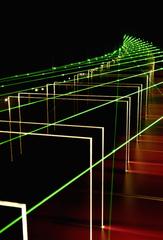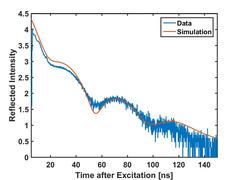URL: https://www.desy.de/news/news_search/index_eng.html
Breadcrumb Navigation
DESY News: Excitation back and forth
News
News from the DESY research centre
Excitation back and forth
X-rays interact weakly with matter. This is their greatest strength for many applications, but also a fundamental weakness for others. In particular the fields of nonlinear optics and quantum optics, mainstays for both fundamental science and technological applications with light, require a strong interaction. Thus, efforts in various directions are undertaken to intensify the light-matter interaction in the X-ray regime. One of the routes towards this goal employs the use of so-called resonant processes. X-ray absorption at atomic resonances (at wavelengths that exactly match the energy required to push the atom in an excited state) can be orders of magnitude larger than off-resonance. A new study led by DESY scientist Ralf Röhlsberger now shows a novel way to enhance and control the interaction of X-rays with resonant atomic systems.

“Normally, Rabi oscillations are observed in optical cavities,” says first author Johann Haber from DESY. These are essentially two mirrors between which light bounces back and forth. If an atom is placed between them, the atom can absorb and re-emit that radiation – since the mirrors will reflect it back to them, this process can repeat itself for some time, leading to Rabi-oscillations. “However, this is not an option for X-ray physics, as there are no such mirrors for X-rays as there are for visible light,” explains Haber. “While it is possible to fabricate X-ray cavities and to observe a number of quantum optical phenomena with them, the strong coupling limit is clearly out of reach in such systems. The reason is simply that the resonance lifetime of the bare cavity is so short, (in the range of femtoseconds,; that is means quadrillionths of a second,) that a photon emitted into the cavity rather leaves the cavity instead of interacting with the nuclei again.”

Measurement of the temporal evolution of the intensity reflected by the two coupled cavities. The signal exhibits a sinusoidal modulation, evidencing the periodic exchange of excitation energy between the two nuclear ensembles. This is the typical signature of Rabi oscillations. It can be quite accurately described within the quantum optical (QO) model developed for this system. Credit: DESY
This trick opens novel perspectives to observe nonlinear optical effects in the X-ray regime. “An interesting avenue of research would be to examine whether non-linearities occur when more than just one photon enters the system,” says co-author Adriana Palffy from the Max Planck Institute for Nuclear Physics. “This has been observed with optical radiation, and could be repeated in the X-ray range, for example at the new European XFEL, the free-electron X-ray laser in Hamburg.” Moreover, these coupled cavities might be employed to generate non-classical states of X-rays which could facilitate the realization of entirely new X-ray techniques, like imaging or spectroscopy with so-called entangled photonic states.
Reference:
Rabi oscillations of x-ray radiation between two nuclear ensembles; Johann Haber, Xiangjin Kong, Cornelius Strohm, Svenja Willing, Jakob Gollwitzer, Lars Bocklage, Rudolf Rüffer, Adriana Palffy and Ralf Röhlsberger; Nature Photonics, 2017; DOI: 10.1038/s41566-017-0013-3



